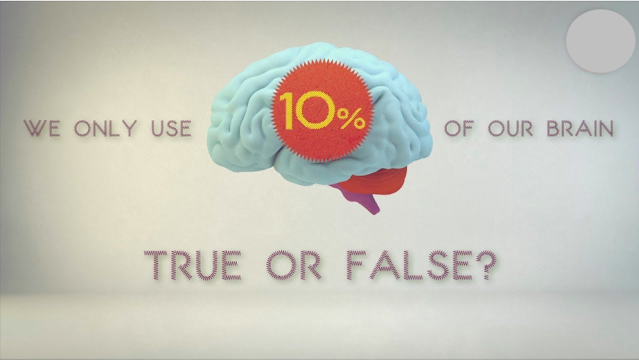According to a persistent fallacy, 90% of our brains are sitting idle while the other 10% is only used for 10% of its potential. With methods “based on neurobiology,” con artists claimed to be able to unlock that potential, but all they really managed to unlock was your pocketbook. Nearly half of scientific professors and two thirds of the general public wrongly hold the 10% myth.
William James, the founder of American psychology, observed, “Most of us do not meet our mental capacity,” in the 1890s, with a challenge rather than an accusation of insufficient brain activity. But the misinterpretation persisted. Additionally, our enormous frontal lobes and the wide regions of the parietal lobe have long baffled scientists as to their function. Authorities came to the conclusion that damage was ineffective because there were no motor or sensory abnormalities. These places were known as quiet areas for many years since their purpose was unclear. Since then, we’ve learnt that they emphasise executive and integrative skills, without which we wouldn’t even be close to being human.
They are essential to abstract thinking, planning, weighing options and responding quickly to changing conditions. When we compute how much energy the brain requires, the notion that 90% of it is just sitting around in your skull seems absurd. The brains of rodents and dogs use 5% of total body energy. 10% is used by monkey brains.
Only 2% of the adult human body’s mass, the brain, uses 20% of the daily glucose expended. This percentage is 50% in children and 60% in babies. Given that their respective brain sizes scale with body size, this is much more than would be predicted. Human brains weigh 1.5 kilogrammes, compared to elephant brains’ 5 kilogrammes and whale brains’ 9 kilos, yet they contain more neurons per weight than any other animal. This tight packing is what gives us our intelligence. The amount of neurons a primate, including us, can support trades off with body size. A 25 kilogramme ape needs to eat eight hours every day to support a 53 billion neuron brain.
One and a half million years ago, the development of cooking offered us a significant advantage. Outside of the body, cooked food is predigested and made soft. Its energy is more readily absorbed by our stomachs. Because cooking saves time and offers more energy than eating food raw, it allows us to maintain the 86 billion densely packed neurons that make up our brains. greater by 40% than an ape. This is how it goes. Simply maintaining the structure of the brain by pumping sodium and potassium ions across membranes to maintain an electrical charge consumes half of the calories burned by the brain. The brain needs to be an energy glutton to accomplish this. Amazingly, it consumes 3.4 x 10^21 ATP molecules each minute, ATP serving as the body’s furnace’s fuel. There isn’t much energy left over after the 86 billion neurons collectively maintain their resting potentials, which prevents the nerve discharges that really carry out tasks from moving down axons and across synapses. The energy cost of producing spikes across the entire brain would be unmanageable, even if a very small portion of neurons in a given region fired at any given time.
Energy effectiveness enters the picture here. Sparse coding, which allows only a fraction of cells to communicate at once, consumes the least amount of energy while carrying the most data. because there are countless different routes for the few signals to spread out along. The cost of sparse coding among a large number of neurons is a downside. Even worse, if a significant fraction of cells never divide, they are useless and should have been eliminated long ago by evolution. The answer is to determine the optimal number of cells that can be active at once in the brain. At any given time, between 1% and 16% of cells should be active for best efficiency. We must stay inside this energy budget in order to even be cognizant.
The majority of the brain’s activities must take place outside of consciousness in order to save resources. Multitasking is a waste of time because of this. Simply put, we don’t have the energy to do even two things at once, much less three or five. Every task we attempt, we perform less skilfully than if we had given it our complete concentration. The odds are not in our favour. Your mind is already capable and wise. Powerful enough to require a lot of electricity to maintain its potency. And so sophisticated that it has built in an energy-efficiency plan. So don’t allow a false belief make you feel bad about your allegedly feeble mind. It would be inefficient to feel guilty. Don’t you see it’s silly to waste mental effort after all this? You need to sustain billions of power-hungry neurons. So get moving!
